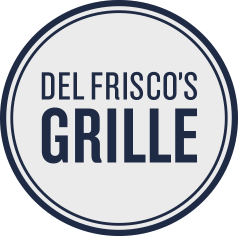Starter to Somm: How To Taste Wine Like a Pro

AUGUST 21, 2018 // WINE
Hello, beautiful people! Jess here, and today we are learning about the process of tasting wine. Yes, there is a process and it is beneficial to practice because it teaches you about the origin of the wine and just generally makes it more fun to drink. It may seem intimidating, but don’t worry, I will walk you through the steps – next thing you know, you’ll be the wine aficionado of the group. Let’s jump in.
LOOK
Before tasting the wine, start off by examining the color and alcohol. Look at the color in the center of the glass and describe it. For white wines common descriptors are straw, lemon, gold or amber. For reds think garnet, red, ruby or purple. The color will vary based on the type of wine you are drinking – for example, Pinot Noir typically is a lighter red compared to heavier varietals like Merlot or Cabernet Sauvignon. On to the alcohol – you may be asking, “Jess, you sound crazy, how can you look at alcohol?” The answer is simple – swirl the wine around in your glass and when you stop, you will see “legs,” or tears, falling down the inside of the glass. That is an indicator of the alcohol in the wine – the faster the tears fall the more alcohol is in your wine. Take a moment to look at the legs and note if they fall slow, medium or fast.
SWIRL & SMELL
So first we observed the look of the wine – now we move on to the nose. This is the final step before we taste! A wine’s smell can tell you a lot about its composition. More importantly, it can alert you of any potential faults in the wine. What is a fault? It’s a problem with the wine that negatively impacts the nose and taste of the wine. Faults could range from oxidation to heat damage to cork taint. Often you will know you have a faulted wine when you taste it, but you can save yourself from the disappointment by adding this step in.
Start by swirling the wine around in your glass. Outside of you looking cool, this helps aerate the wine and release more of its aromas. Then, bring the glass up to your nose, take a big sniff and think about what you are smelling. The first few times it may seem odd, or you may not get a distinct smell right away, but just keep practicing and it will get easier each time. Something that can help you if you are a beginner is to start with broad categories – trying to get too specific right away can get frustrating. For this process, we smell in the following order: fruit, non-fruit, earth and wood. The best practice is to write 3 descriptors – common smells from these categories are dried fruit, citrus, floral, spice, grass, vanilla or dark chocolate.
TASTE & DISCUSS
Now on to the tasting! There are 3 questions to ask yourself when tasting a wine – how much is your mouth gushing, how dry is your tongue and how much is the base of your throat burning? These questions will help you define the wine’s acidity, tannins and alcohol. Once you’ve gone through the whole process, take some time to think about the entire composition of the wine. Was it balanced, or too acidic? Were there any characteristics that jumped out to you? Thinking through these questions can also help you determine certain styles of wine you are more likely to enjoy. A heavy Cabernet Sauvignon may be too tannic for you, whereas a Pinot Noir is much more favorable to your palate.
If you are wanting to taste wine, but not sure what wine to start with, there are some great varietals to go with based on your skill level. Riesling or Pinot Noir are great for beginners, while Chardonnay and Cabernet Sauvignon are perfect for those who have dabbled in tasting before but want to strengthen their skill level. For my advanced tasters, Chianti and New Zealand Sauvignon Blanc are two fun varietals to explore.
ENJOY!
Now that we’ve gotten all the serious business out of the way, bottoms up! Take some well-deserved sips and pat yourself on the back. The act of tasting wine can seem lengthy and like a hassle at first, but practice makes perfect. Keep trying to strengthen your skill and you’ll be surprised at how it becomes easier to identify aromas and tastes. If you are stumped on something, don’t beat yourself up for it – the world of wine is a truly fantastic realm of education, but it can also get frustrating (trust me, I know). There are ways that you can make tasting wine fun. You could add this into your “treat yourself” routine and practice tasting a wine once a week or host a tasting party with your friends where everyone brings a bottle. Whatever you choose to do, always remember that the process should be fun and intriguing. There’s always something new to learn – heck, I’m still learning new things every day.
Well, I certainly had fun today, did you? Hopefully, this gave you the guidance and support to take the leap into tasting wine like a pro. Until next time, love your faces. – Jess
